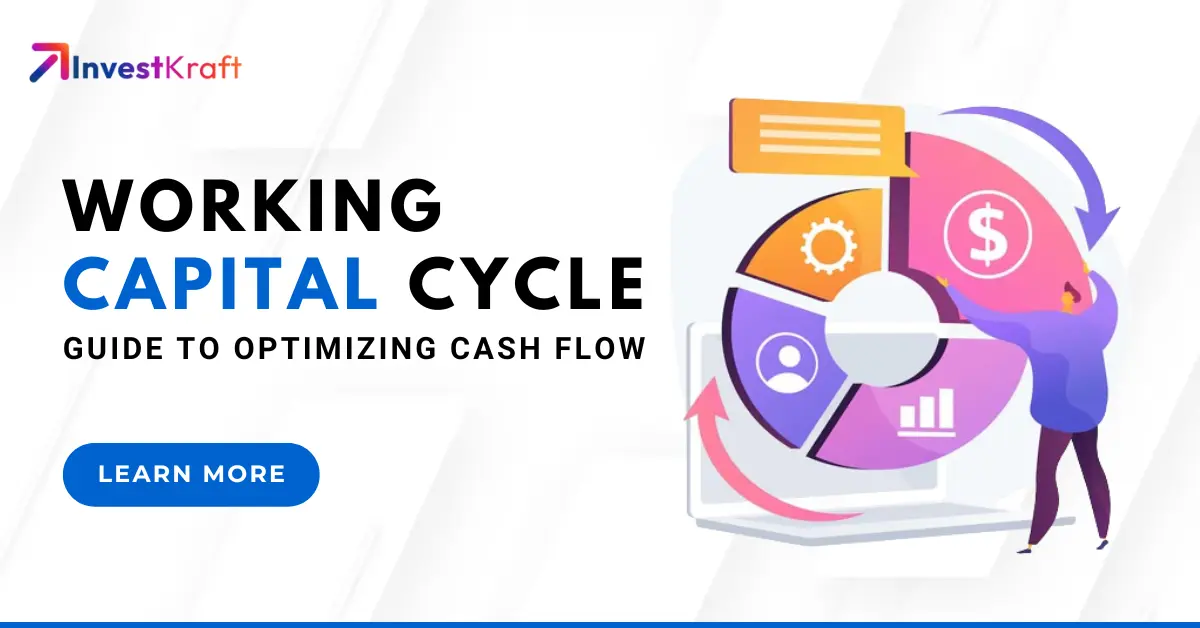How to Save Income Tax in a New Tax Regime FY2024?
.webp)
The Finance Minister, Nirmala Sitharaman, has introduced a new tax regime in the Union Budget of 2020. In this regime, tax slabs were changed and offered concessional rates to the taxpayers. So, now there are two types of tax regimes, each has its pros and cons. The taxpayers have the flexibility to choose from any regime.
If you choose, the new tax regime to save maximum tax, remember there are limited deductions and exemptions available. You cannot utilize the benefits of deductions of the old tax regime any further. In case, you have fewer deductions in a financial year, then you choose for new tax regime. In the article, different ways of saving the income tax is mentioned.
What is a New Tax Regime?
This is a new way of filing income tax for the government. If you choose a new tax regime slab, then you cannot claim several exemptions such as HRA, LTA, 80C, 80D, and more. However, in the 2023 budget, the government introduced 5 changes that will remain the same even for FY 2024-25 as no new change has been made in the Budget 2024. This is done to encourage the taxpayers to adopt a new tax regime.
A complete tax rebate is given on an income up to ₹7 lakh and this limit is ₹5 lakh under the old tax regime. This means that taxpayers who have an income of up to ₹7 lakhs will not have to pay any tax at all under the new tax regime.
5 Ways to Save Income Tax in New Tax Regime 2024
The following are the ways to save your hard-earned money by choosing the right ways during the calculation of the tax by using the new regime tax calculator:
- Plan Your Investments: You must invest in the schemes that are eligible for deduction under the tax deduction such as the Public Provident Fund (PPF), Equity-Linked Saving Scheme (ELSS), National Pension Scheme (NPS), and tax-saving fixed deposits. Your invested amount is deductible from the tax and in some schemes, your capital gain is also deductible from tax. So, there are two benefits to this, save taxes and earn returns.
- Claim Tax Deductions: During the calculation of tax, claim all the tax deductions that are available to you. For example, deductions on home loans, education loans, health insurance premiums, and medical expenses. However, all these deductions will reduce your taxable income.
- Use Section 80C: The deduction of Section 80C is the standard deduction in the new tax regime. You get a maximum limit of ₹1.5 lakh. You can avail of this by investing in schemes that qualify for the deduction such as PPF, ELSS, NPS, and tax-saving fixed deposits. The maximum limit set for this section is to encourage you to invest in your future by investing in these schemes.
- Opt For New Tax Regime: This regime has lower tax rates as compared to the old tax regime but without deductions. In case, you don’t have many deductions to claim, then opt for a new tax regime to save the maximum amount of tax.
- File Your Tax Returns: By filing the tax returns on time, you can avoid penalties or interest payments. You can choose the e-filing of your returns to make the process faster and more convenient.
Available Deductions Under New Tax Regime
For the assessment year 2024-25 (financial year 2023-24) the available deductions are limited if compared with the old tax regime. These deductions are as follows:
- Standard deductions of Rs. 50,000 under Section 80TTB deduction on taxable income
- Employer’s contribution to NPS accounts of employees
- Deductions on health insurance premiums u/ Section 80D
- Transport allowances to Persons with Disabilities
- Gratuity u/ Section 10(10)
- Leave Encashment u/Section 10(10AA)
New Tax Regime Exemption List
- Additional Depreciation u/ Sec 32
- Investment Allowance u/ Section 32AD
- Sector-wise Deductions for Businesses u/ Section 33AB and 22ABA
- Expenditure on Research & Development u/ Section 35
- Expenses on Capital Expansion u/ Section 35AD
- Exemptions u/ Section 10AA for Units in SEZ
- Depreciation and Losses in the Business
Tax Rates Under New Tax Regime Slabs
| Income Tax Slabs | Tax Rates (in % p.a.) |
| Up to Rs. 3 lakhs | NIL |
| Rs. 3 lakhs- Rs. 6 lakhs | 5% |
| Rs. 6 lakhs- Rs. 9 lakhs | 10% |
| Rs. 9 lakhs- Rs. 12 lakhs | 15% |
| Rs. 12 lakhs- Rs. 15 lakhs | 20% |
| Rs. 15 lakhs & Above | 30% |
| Education Cess | 4% p.a. of Taxable Income |
Difference Between Old vs New Tax Regime FY 2024
In comparing old and new tax regimes, you can find the old tax regime beneficial. If you are eligible for the deductions and exemptions. However, the new tax system in India has reduced rates for individuals who are earning up to Rs. 15 lakh annually.
While choosing between the two tax regimes. You must look at your tax exemptions and deductions available under the old tax regime. And, after deducting all eligible exemptions and deductions, check the net taxable income.
So, by calculating the tax liability based on this net taxable income, you can compare your tax liability under the new tax regime. In this, choosing the regime which has lower tax liability is the best option. Also, share this information with your employer for the appropriate Tax Deducted at Source (TDS) that can be deducted from your salary.
Old vs New Tax Regime Calculator
You can compare your tax liability under both the new and the old tax regime through a calculator. Using a method of calculation is important because deductions under the new regime are fewer as compared to the old tax regime. So, you must calculate your tax liability by using the new tax regime calculator and the same for the old tax regime. Understanding the regimes will benefit you more and this is completely based on your income and investment profile.
Conclusion
The new tax regime offers taxpayers an option to choose between lower tax rates, limited deductions, higher tax rates, or multiple deductions and exemptions. As a taxpayer, if you want to save the tax, then the best time to plan your investment is at the beginning of the financial year.
You should not wait for the last quarter of the year to invest. Also, collect the proof of your investment with time to avoid any misplacement of the proof. Similarly, if you start early, you will receive better compounding interest and tax savings as an additional benefit.
Related Posts;
- SWP Calculator with Inflation – Systematic Withdrawal Plan
- SIP Calculator And Its Benefits
- Sukanya Samriddhi Yojana Calculator
- Simple Interest Rate and How to Calculate It?
- Different Types Of EMI Calculator For Loans
- Loan Against Property EMI Calculator Works?
- PPF Calculator – How to Use it?
- ELSS Calculator and How Does it Work?
- GST Calculator and How Does It Work?
Verify Phone Number
Related Post

How to Earn Money Selling Loans and Insurance Online in 2025
Imagine earning lakhs from home—no office, no boss, just you and a smartphone. In 2025, sellin...
Read more...
50 Best Money-Earning Apps in India 2025 – No Investment Required!
Want to turn your smartphone into a money-making machine in 2025? You’re in luck! India’s digital la...
Read more...
Everything You Need to Know About Digital Gold Investments in 2025
Gold has been a trusted store of wealth for centuries, but in 2025, it’s getting a modern upgr...
Read more...
Guide to Unlisted Shares in India 2025: Opportunities, Risks, and How to Invest
Wondering how to tap into India's next big investment wave? Unlisted shares might be your answer.Wha...
Read more...
10 Best Websites to Make Money Online in India 2025
India's digital landscape is booming, providing an unprecedented avenue for earning. Forget the conv...
Read more...
InvestKraft Partner App: 5 Powerful Reasons to Download & Start Earning Today!
In today’s fast-paced financial world, having the right tools can make all the difference. Whe...
Read more...
5 Key Trends Redefining the BFSI Sector in India 2025
Banking, Financial Services, and Insurance (BFSI) sector in India is undergoing a transformative pha...
Read more...
How to Check If Your Business is Running Smoothly by Assessing Your Working Capital Ratio?
To fully understand your company’s performance, examining various metrics that shed light on differe...
Read more...
Understanding the Lifeblood of Business Called “Working Capital Cycle”
The working capital cycle, which measures how quickly a business can convert its current assets into...
Read more...
Paying LIC Premiums With Your EPF Account: Is It Right for You?
Need help to finance your LIC insurance premium due to a shortage of funds? Well, good news awaits y...
Read more...Reach out to our Experts if you have any Doubts
Like the best things in life, Consultations @InvestKraft are free
Drop a Mail or give us a Missed Call & Begin your Investment Journey here



